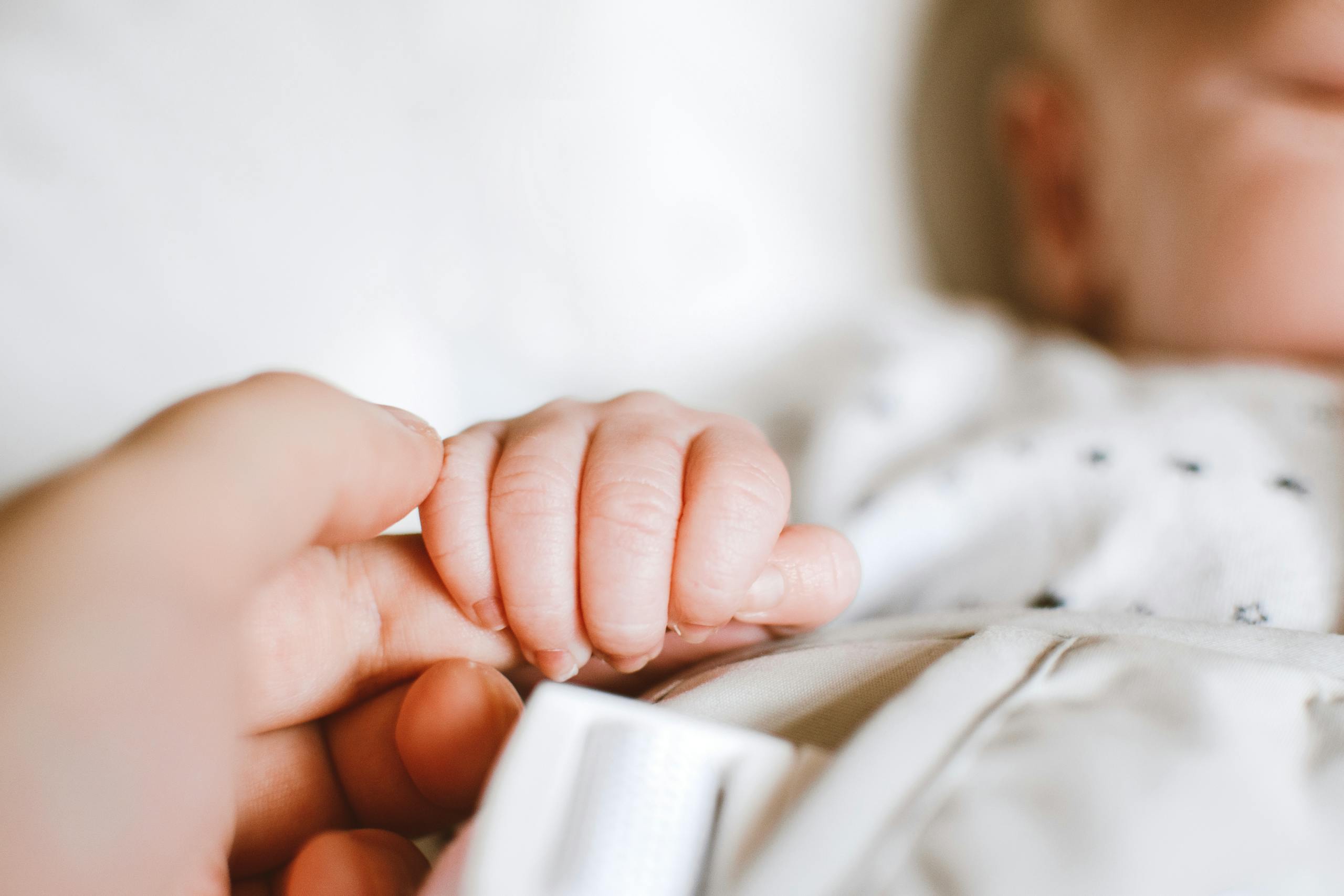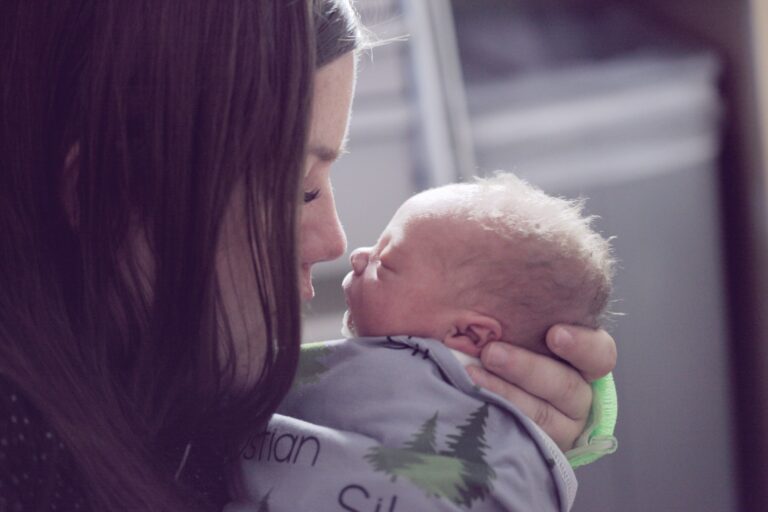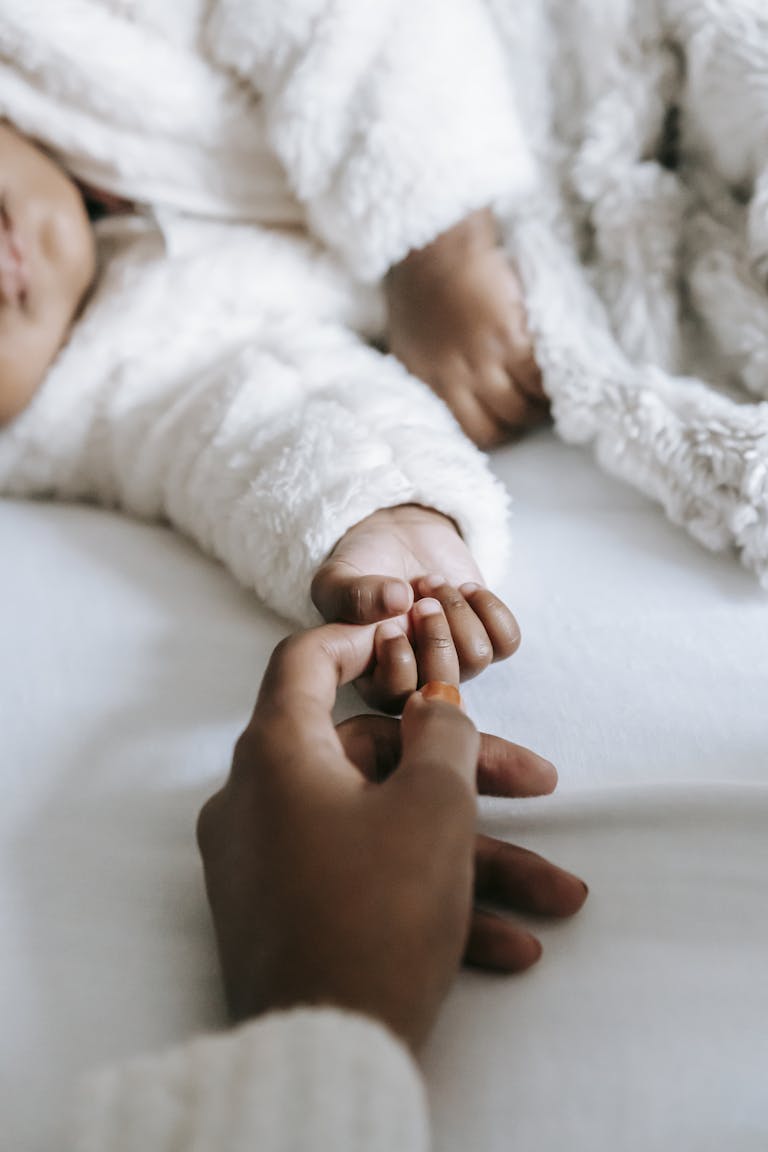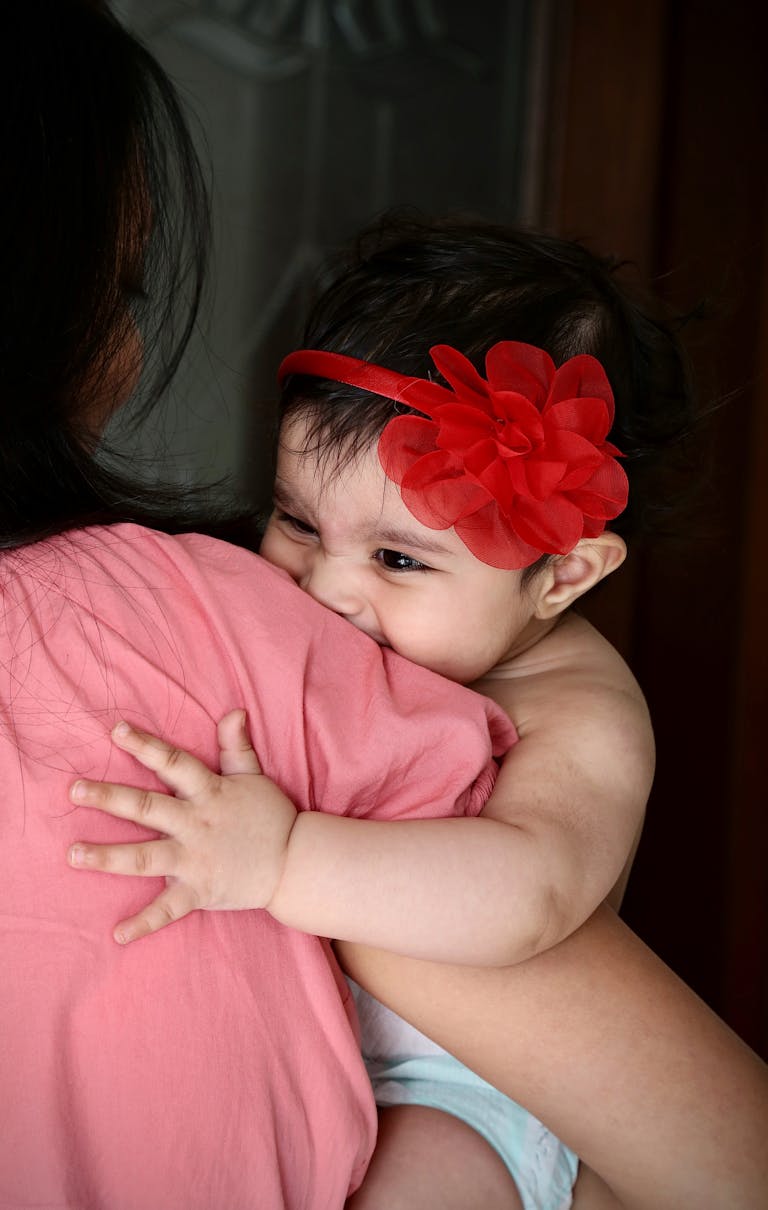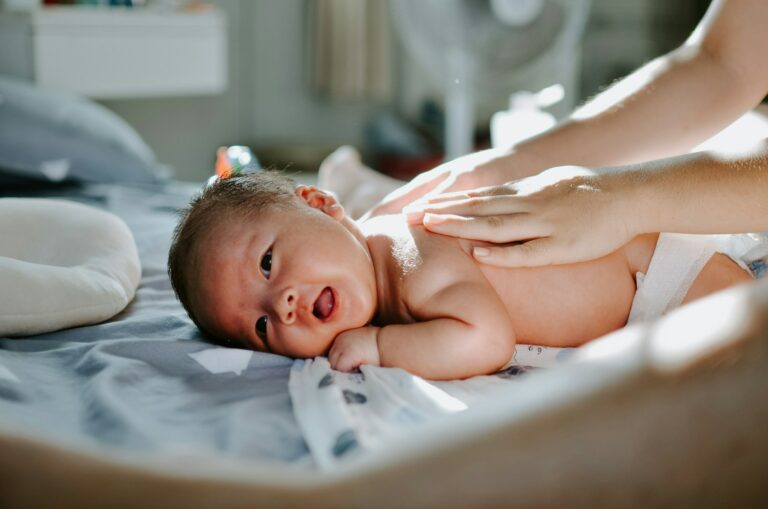A baby’s sudden little grip—delicate, yet astonishingly strong—has the power to melt the heart of even the most composed adult. If you’ve ever wondered why your newborn can cling to your finger as if it’s a lifeline, you are witnessing the grasp reflex, a primitive and automatic action present from birth. Many parents find themselves examining those tiny hands, sometimes with concern or curiosity, especially when noticing how their child holds on, lets go, or simply reacts to touch. Questions swirl: Should the grasp reflex always be this strong? Is it normal if my baby only grips with one hand? What does it mean if the reflex lingers, or seems weak? Knowledge here isn’t just for fascination—it’s essential for reassuring you about your child’s health and alerting you to signals that might need extra attention. From primitive survival instincts to neurological milestones, the grasp reflex opens a window into your baby’s developing brain and motor skills. Let’s explore this captivating phenomenon, blending medical insight, practical advice, and gentle encouragement for every stage of early parenting.
What Is the Grasp Reflex? The Science and Story Behind That First Hold
One moment your little one’s hand seems relaxed, the next, their fingers coil tightly around a finger, rattle, or even your saree pallu. This grasp reflex, also called the palmar grasp reflex, is an involuntary response—meaning your baby isn’t choosing to hold on, it happens by automatic wiring in the nervous system. Stroke or press gently on a newborn’s palm, and, almost magically, the fingers wrap around the intruding object. Not just an endearing gesture—this action served, through evolution, to help infants hold fast to their caregivers.
Up to about 4 to 6 months, this involuntary clutch persists, powered by neural circuits running from the palm to the brainstem, bypassing the reasoning parts of the brain, and relying on nerves like the median and ulnar. If you place a finger in an infant’s hand, the strength of their grip can even surprise, sometimes momentarily supporting their own weight! Yet, this peculiar reflex isn’t permanent; with time, the developing cerebral cortex gains more control, and your baby transitions gradually from primitive reflexes to intentional moves like reaching, grasping, and playing.
Palmar and Plantar: The Many Faces of Grasp Reflex
You touch your baby’s palm—a quick, strong clench. But the story doesn’t end with the hand. Ever tickled your little one’s foot and watched their toes curl? That’s the plantar grasp reflex in action, the foot’s mirror-image to the hand’s palmar magic. The plantar reflex tends to last longer, weaving neurodevelopment and survival instincts together.
Then there’s the Babinski reflex, where gentle stimulation of the foot’s sole causes the big toe to rise and the other toes fan out—a normal finding that disappears by 1 to 2 years of age. Each of these reflexes has a timeline, and their coordinated fading marks healthy neurological development. Testing is straightforward for clinicians: a stroke, a press, and the search for symmetry, strength, and age-appropriate response. Irregularities here—such as a weak, absent, or persistent grip—can prompt more detailed neurological checks.
Grasp Reflex on the Timeline: From Fetus to Milestone
Did you ever imagine your baby, while still inside the womb, already practicing these first grabs? The grasp reflex begins to develop as early as 16 weeks of gestation, and it’s often clearly seen in preterm infants too, by around 25 weeks post conception. In full-term newborns, it’s robust—sometimes, yes, surprisingly so. As weeks slip by toward the half-year mark, the grip gradually loosens. Now, voluntary control takes center stage: reaching for a colourful ring, grasping a toy elephant, transferring objects hand to hand. This gentle fade signals that higher brain centers—especially the frontal lobe—are coming online, suppressing automatic behaviours and paving the way for complex movements that support exploring, feeding, and learning.
From Reflex to Real Skill: The Building Blocks of Motor Development
Is the grasp reflex just a fleeting curiosity? Absolutely not. It forms the bedrock of fine motor skills—the ability to hold a spoon, draw with a crayon, eventually tie shoelaces. As the automatic reflex gives way, what emerges is voluntary grasping, honed by muscles strengthening and sensory input multiplying. Interacting with your child (offering textured toys, letting them hold your finger, providing time on their tummy) creates rich stimulation, awakening those tiny hands to explore and master their world.
Encouragement here doesn’t require elaborate routines. Hold out a bright rattle, smile, let your child decide when to let go or hold tight. Frequent exposure to different shapes, textures, and even temperatures (always safe, of course), primes the nervous system and supports seamless reflex integration into purposeful movement.
How Professionals Assess the Grasp Reflex in Babies
The process is gentle and thoughtfully tailored to your child’s comfort. The doctor or nurse ensures your baby is calm, then softly stimulates the palm (or sole, for plantar reflex). They look for a quick, symmetrical closure—the hallmark of a healthy grasp reflex. Lopsided grip, feeble response, total absence—all these patterns may point toward further evaluation. This isn’t about policing your baby’s every move, but about using grasp reflex as a window into mature central and peripheral nervous system function.
Notably, if a baby continues to show a strong, involuntary grasp after the expected age, or if the grip is consistently weaker on one side, health professionals might consider underlying conditions (such as nerve injury, muscle problem, or a brain issue like cerebral palsy). The reverse—no response at all—also urges further neurological scrutiny, helping ensure the best possible care early on.
Nurturing Healthy Reflex Integration: Everyday Parenting Tips
Supporting your baby’s grasp reflex doesn’t mean constant intervention—nature handles much of the work. But gentle, daily activities create an ideal environment for development:
- Touch and explore: Let your child grab your finger or safe, soft toys.
- Offer different textures: Fabric swatches, rattles, plush animals—all allow discovery.
- Prioritise tummy time: Laying on the tummy strengthens the upper body, supporting voluntary reaching and open-handed exploration.
- Interactive play: Hold your baby’s hand during feeding, gently open and close their fists with songs and rhymes. Natural play is far more effective than scheduled exercises.
And a tip worth remembering: Prolonged periods in car seats, swings, or other devices (except when traveling or sleeping) are best kept short during awake hours, so little hands remain free to move and grow strong.
Grasp Reflex and Clinical Red Flags: When to Consult a Doctor
Some parents wonder: “Should I worry if my baby releases objects too easily? If one hand grips more than the other? If the reflex holds on longer than six months?” These aren’t trivial questions. Early identification of issues streamlines support, especially for signs like:
- Total absence of grasp reflex at birth
- Reflex that is strong, persistent, or asymmetric past 6 months
- Delays in general hand use (such as trouble reaching, holding, or transferring objects)
Also, a once-lost reflex that resurfaces in older children or adults—particularly after brain injury—signals a need for medical evaluation. Here, swift consultation with a pediatrician or neurologist streamlines the pathway to therapies and better outcomes.
When Reflex Integration Faces Challenges
Sometimes, despite a parent’s best efforts and attentive caregiving, the grasp reflex persists or is slow to fade. This may stem from diverse causes: prematurity, subtle neurological conditions, or rare developmental delays. In such cases, occupational or physical therapy becomes a valuable ally. Therapists introduce purposeful activities, exercises, and sensory-rich play designed to tailor the nervous system’s progress. With ongoing monitoring and caring guidance, children often move from reflex to voluntary skill, gaining confidence daily—at their own pace.
If the reflex lingers, daily activities requiring fine motor control—eating, playing, writing—may feel just a bit harder for your child. The addition of sensory processing challenges (such as discomfort with certain touches or textures) sometimes appears, too. Here, empathy, patience, and sustained encouragement during everyday routines make a remarkable difference.
Special Scenarios: Prematurity, Disorders, and Adults
Babies born prematurely may show a less pronounced or delayed grasp reflex—reflecting their neurological age more than any specific pathology. Similarly, absence or asymmetry can occur in the context of brain or nerve injuries, or conditions like cerebral palsy. Occasionally, in adults recovering from frontal lobe injury or illness, the grasp reflex makes a dramatic return—providing helpful clues about the site and extent of brain involvement, steering future therapy.
The Animal Connection: Grasp Reflex in Nature
Ever marvelled at a baby monkey clinging tightly to its mother’s fur as she leaps through the forest? This is the same grasp reflex—nature’s way of ensuring safety and bonding in early life. It’s a beautiful reminder of the deep evolutionary roots shared by all mammals, where primitive reflexes lay the foundation for ever more sophisticated, intentional actions.
Evolving Science: New Pathways in Grasp Reflex Research
Modern tools now let scientists peer deep into the working brain: sensor-driven tests, advanced imaging, genetic analyses. These advances bring sharper understanding of the interaction between the central nervous system and muscle movement, refining our approach to therapy and diagnosis. Factors influencing the grasp reflex—from early preterm birth to environmental stress—are being actively studied, promising future breakthroughs in personalized care and rehabilitation.
Key Takeaways
- The grasp reflex is a powerful, automatic sign of a healthy newborn nervous system, starting from as early as 16 weeks in the womb and fading by around 4 to 6 months.
- Gentle fading of this reflex signals that the brain is progressing from primitive pathways to purposeful, voluntary movement—an essential developmental leap.
- Differences in strength, duration, or symmetry of the reflex may point toward temporary changes or underlying health issues. Any concerns are best discussed with your baby’s doctor to access support quickly.
- Play-based stimulation—touching, holding, exploring various textures—naturally nurtures hand development. No special exercises are needed, just affectionate, daily interaction.
- Resources and professionals are available—parents never have to decode baby’s signals alone. For tailored advice and free health checklists, download the Heloa app, where pediatric expertise is always within reach.
Questions Parents Ask
Can you help your baby develop or strengthen the grasp reflex?
Offering your finger or a soft, textured toy is already enough—nature does most of the work. Interactive moments and varied sensations help develop nerves and muscles, but there’s no need for strict exercises. Enjoy the tiny hand’s wonders as part of everyday bonding.
Is the grasp reflex linked to breastfeeding?
Yes, indeed! The instinctive grip often helps newborns connect emotionally with the caregiver during feeding, fostering closeness and sometimes allowing them to hold onto clothing. Beyond nutrition, these gentle touches nurture warm bonds.
Is it normal for one hand to be stronger than the other?
Small differences are common in early weeks. Still, if you notice persistent, clear asymmetry in strength or movement between the hands, it’s sensible to bring this to your pediatrician’s notice. Often it’s temporary, but open observation ensures tailored support.
What if the grasp reflex returns in older children or adults?
A reappearing grasp reflex is rare and usually seen after neurological injury (like stroke or trauma). It can be a valuable clue for doctors to understand which brain regions are affected and to plan appropriate therapies.
Does the reflex disappear on its own?
Yes, in almost all cases. As the cerebral cortex (decision-making part of the brain) matures, voluntary movement takes over and the automatic reflex fades naturally. Every child is unique—patience and support encourage gentle, healthy progress.
Further reading:

